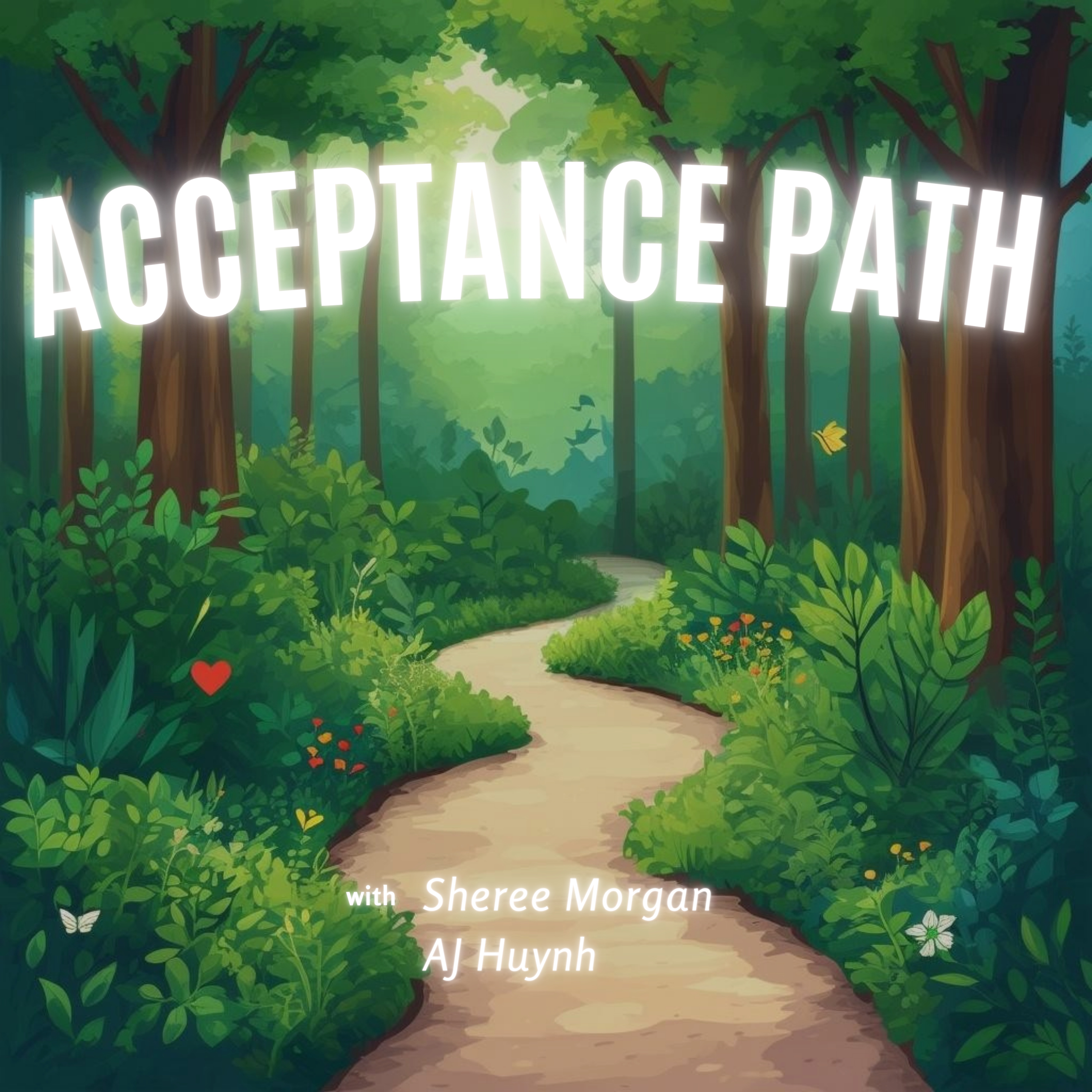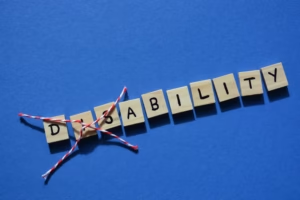
Two mental health experts have joined forces to make an uplifting podcast about well-being and personal growth. We use this show to share fresh and sometimes eye-opening ideas, helping listeners create a more fulfilling life. We’re not pushing any one viewpoint – instead, we’ll bring in guests from all walks of life to expand our understanding of the world. Come along with us as we explore different outlooks together.
In this episode, we talk with Jenabeth Gunter about her experiences as a biracial person growing up in a small Texas town. Hosts AJ Huynh, Sheree Morgan, and our guest explore the challenges and benefits of having multiple cultural identities. We discuss ways to embrace all aspects of one's heritage and the importance of finding community.

The biracial population in America is growing at an unprecedented rate. According to the U.S. Census Bureau, the multiracial population increased by a staggering 276% between 2010 and 2020, jumping from 9 million to 33.8 million people. This dramatic rise reflects both changing demographics and evolving views on racial identity in American society.
The Complexities of Being Biracial
For many biracial individuals, navigating identity can be a complex and challenging journey. Jenabeth Gunter, who is half Malaysian-Chinese and half white, shared her experiences growing up in a small Texas town:
“We were not white enough and also not Asian enough,” Jenabeth explains. “In that town when there was really no other Asians in the mix, it definitely felt more isolating.”
This sense of not fully belonging to either racial group is common for biracial people. As Sarah Gaither, a social psychologist at Duke University, notes: “Multiracials face the highest rate of exclusion of any group. They’re never black enough, white enough, Asian enough, or Latino enough.”
The struggle to fit in can be particularly acute in areas with less diversity. Jenabeth grew up in Olton, Texas, a town with a population of about 2,000 people. According to recent census data, the town had zero Asian residents as of 2020, highlighting the isolation Jenabeth and her family faced.

Microaggressions and Stereotypes
Biracial individuals often face microaggressions and stereotyping from multiple directions. These interactions, while sometimes well-intentioned, can make biracial people feel othered and reinforce harmful stereotypes. Jenabeth recounted some common questions and comments she received growing up:
- “Where are you really from?”
- “Can you read this?” (while holding up Asian characters)
- “Aren’t you supposed to be good at math?”
- “Why are your eyes so small?”
- “Do you eat dogs?”
- “Why does your mom talk so funny?”
These types of comments reflect a lack of understanding about the diverse experiences of biracial individuals and can have a significant impact on their sense of self and belonging.
Rejecting Cultural Identity
For some biracial youth, the pressure to fit in can lead to rejecting part of their heritage. Jenabeth admitted:
“I very much was just like, I don’t really want to have anything to do with the Asian culture. I would downplay the Asian culture or Chinese New Year.”
This rejection can be painful not only for the individual but also for family members. Jenabeth’s mother, who immigrated from Malaysia, found herself isolated in her attempts to maintain cultural connections. The lack of acknowledgment of important cultural events, such as Chinese New Year, can create a disconnect between generations and lead to feelings of guilt later in life.
The Immigrant Experience
Jenabeth’s mother’s journey provides insight into the challenges faced by immigrants in small-town America. Coming from Malaysia to rural Texas was a significant culture shock:
“She went from living in a city on an island in Malaysia to living in a small rural town in Texas,” Jenabeth explains. “She was very isolated, essentially being the only Asian in a town that was mainly filled with Hispanic and white people.”
This isolation can make it difficult for immigrants to maintain their cultural identity while also adapting to their new home. It also impacts their children, who may struggle to connect with their heritage when there are few cultural touchstones in their immediate environment.
Progress and Changing Perceptions
Despite these challenges, there are signs of progress in how biracial individuals are perceived and represented in American society. Jenabeth noted that Asian culture has gained more mainstream acceptance in recent years:
- Boba tea shops are now ubiquitous in many urban areas
- K-pop groups like BTS and Blackpink have gained global popularity
- Asian cinema, including films like “Crazy Rich Asians,” “Parasite,” and “Shang-Chi,” have achieved critical and commercial success
- Asian cuisine is widely celebrated and available in many communities
Additionally, representation in media has improved, though there is still work to be done. Jenabeth shared:
“Asian representation in media has come a long way in the past 20 years. When I was growing up, really, my only perception of an Asian in media was Lucy Liu in Charlie’s Angels, and that was it.”
The Impact of Representation
The lack of diverse representation in media can have a profound impact on how biracial individuals see themselves and their place in society. Jenabeth recalled:
“As a little girl growing up, you see these things and you think, ‘Oh, I’m not a main character. I’m just a sidekick.’ And that really impacts your perception of yourself and your identity.”
This underscores the importance of continued efforts to increase diversity in media and public life. Seeing people who look like you in positions of prominence can help validate your own experiences and aspirations.
Embracing Biracial Identity
For many biracial individuals, learning to embrace all aspects of their identity is a journey that often extends into adulthood. Jenabeth offered several strategies that have helped her:
- Explore cultural heritage: Take time to learn about the history, food, and traditions of both sides of your heritage. This can help you feel more connected to your roots and understand the experiences of your family members.
- Travel to ancestral homelands if possible. AJ recently wrote an article on the importance of mindful traveling and how traveling with a purpose is critical and can be beneficial for mental health. Jenabeth’s trip to Malaysia at age 24 was a transformative experience:
“It truly was life-changing for me because for the first time in my life I was able to actually engage with my mother’s family, experience Chinese New Year, eat all the foods and just feel the culture and be immersed in it.”
- Engage with cultural media: Watch films, listen to music, and read books from both cultures. This can help you connect with your heritage even if you don’t have immediate access to those communities.
- Connect with others: Seek out community groups or start your own. Jenabeth’s mother found a “Malaysians in Dallas” group that organizes regular gatherings, providing a way to stay connected to their culture.
Jenabeth emphasized the importance of intentionality in this process:
“If you are wanting to get more in tune with a certain cultural side of yourself, it’s going to take some effort.”

The Biracial Advantage
While being biracial comes with unique challenges, research suggests it may also confer certain advantages. A Psychology Today article reported that multiracial individuals often demonstrate:
- Greater adaptability
- Enhanced creativity
- Increased open-mindedness
Sarah Gaither’s research found that those who identify as multiracial “report higher self-esteem, greater well-being, and increased social engagement” compared to those who identify with a single race.
The Role of Family and Community
The support of family and community plays a crucial role in helping biracial individuals navigate their identity. For Jenabeth, her mother’s efforts to maintain connections to Malaysian culture, despite the challenges, provided a foundation for her to explore her heritage later in life.
Community groups, like the “Malaysians in Dallas” organization, can provide valuable opportunities for cultural connection:
“About once a quarter they plan a social gathering,” Jenabeth explains. “If it’s potluck Asian food, I am there. It’s fun just to kind of meet her friends that she’s made in that group.”
These gatherings allow biracial individuals to experience aspects of their culture that may be less accessible in their day-to-day lives.
Navigating Multiple Identities
One of the unique aspects of the biracial experience is learning to navigate multiple cultural identities. This can be challenging, but it also provides opportunities for personal growth and cultural bridge-building.
Jenabeth’s experience of rejecting her Asian identity in her youth, only to embrace it more fully as an adult, is not uncommon. Many biracial individuals go through phases of identifying more strongly with one aspect of their heritage before finding a balance that feels authentic to them.
The Impact of Location
Where a biracial person lives can significantly impact their experience. Jenabeth’s story illustrates the stark difference between growing up in a small, homogeneous town and living in a more diverse urban area:
“I do think in my adulthood, since I’ve moved away from that town, it’s been able to broaden my horizons to get more in touch with that part of my identity.”
This highlights the importance of exposure to diverse communities and experiences in shaping one’s sense of self and cultural identity.
Building Inclusive Communities
Ultimately, creating accepting and inclusive communities is crucial for supporting biracial individuals. As Jenabeth noted:
“Being able to experience Asian culture in the form of a community is really important.”
By fostering environments where people can fully embrace all aspects of their identity, we can help biracial individuals thrive and celebrate the richness of their diverse heritage. This involves:
- Educating others about the biracial experience and challenging stereotypes
- Creating spaces for biracial individuals to connect and share their experiences
- Promoting diversity in media, education, and public life
- Encouraging open dialogue about race, identity, and culture

Looking to the Future
As the biracial population continues to grow, society will need to adapt to better support and include multiracial individuals. This may involve:
- Updating official forms and documents to better reflect the reality of multiple racial identities
- Developing educational curricula that includes the experiences and perspectives of biracial individuals
- Expanding research on the unique challenges and strengths of the biracial population
- Training healthcare providers to better understand and address the specific health concerns that may affect biracial individuals
Conclusion
The biracial experience is complex and multifaceted, shaped by personal, familial, and societal factors. While challenges remain, increased awareness and representation are helping pave the way for greater acceptance. By continuing to have open conversations, challenging stereotypes, and creating inclusive spaces, we can work towards a future where everyone feels free to embrace their full identity.
As we move forward, it’s important to recognize that the growing biracial population is not just changing demographics but also reshaping how we think about race and identity in America. By embracing this diversity and learning from the unique perspectives of biracial individuals, we can build a more inclusive and understanding society for all.




